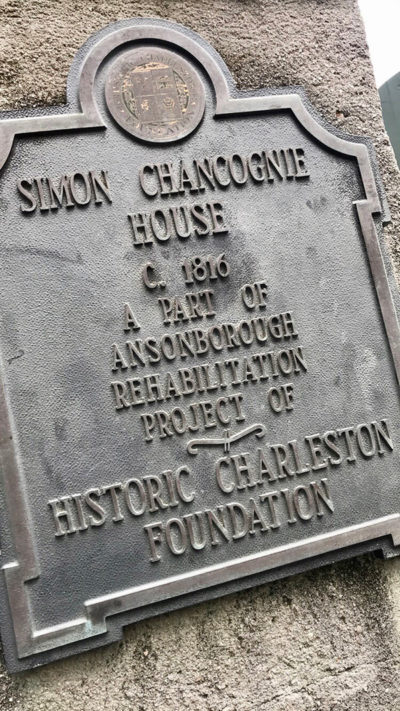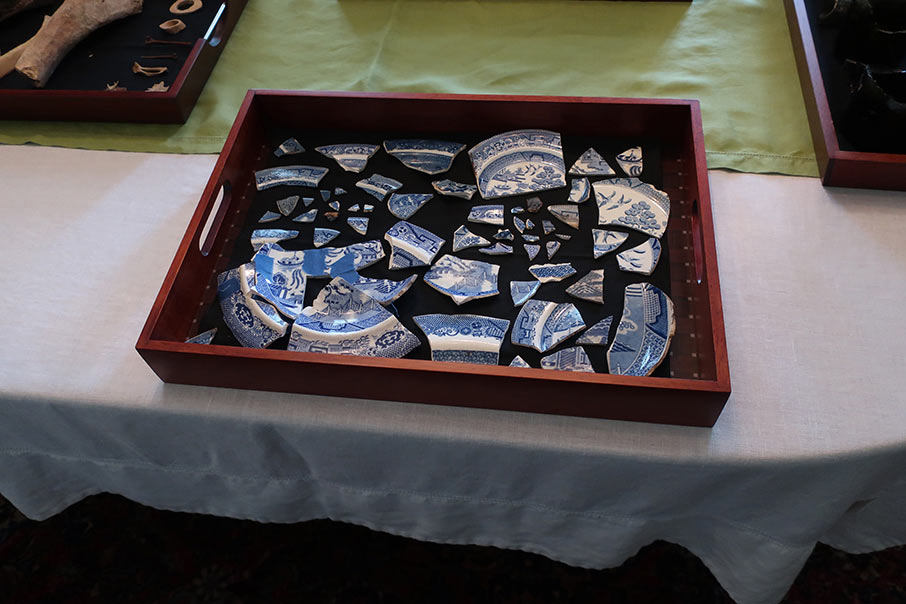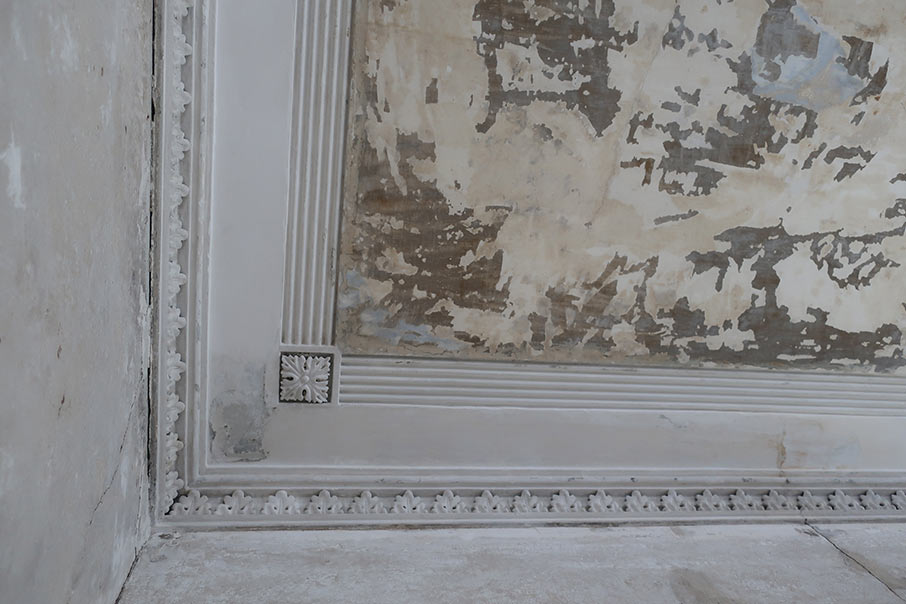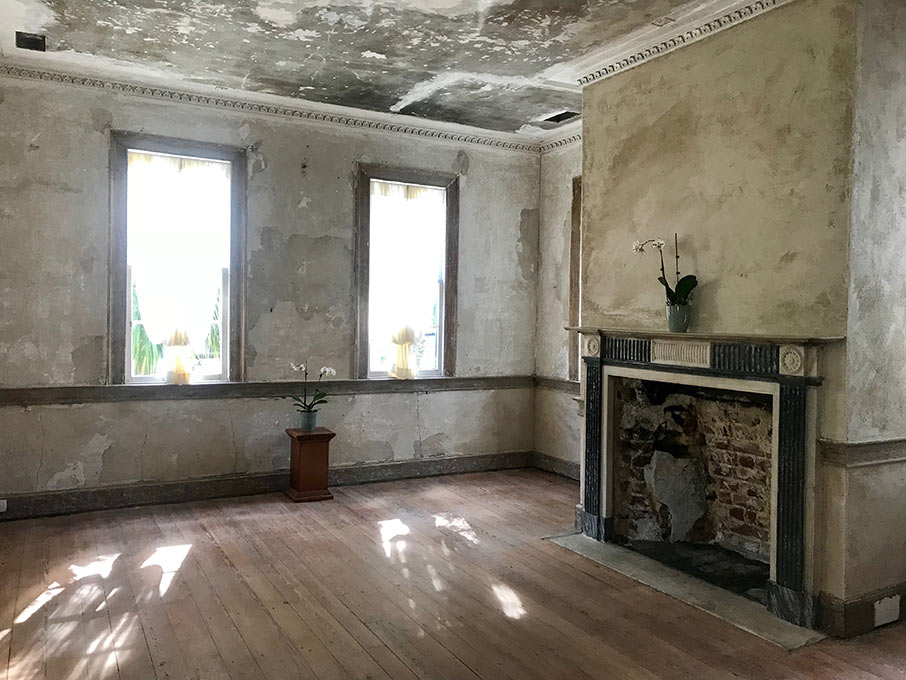Two and a half years ago, I moved to Charleston to pursue a research internship at the Simon Jude Chancognie House located on Laurens Street in the historic Ansonborough neighborhood. As the first major step in my pursuit of a career in art and architectural history, it was an incredible combination of my interests – for a French and Art history double major, researching the home of the former French consulate in Charleston was a dream come true. Fast-forward to present day, and I am in my second full week in the role of Program & Tour Coordinator at the Gibbes Museum of Art. Coincidentally, this week’s program was none other than The Accidental Preservationist, a lecture by my former supervisor, Juliana Falk, on the Simon Jude Chancognie House!

When I met Juliana two years ago, she had not yet dubbed herself “the Accidental Preservationist” though she did explain to me how the preservation project that she had begun at her home was, indeed, quite an accident. As Juliana relayed to visitors on Monday, when she moved to Charleston, she was looking for an historic home – which to her, at the time, meant very simply, “old.” The true historical importance of the home she purchased did not become clear to her until she sought the assistance of historical contractor David Hoffman to deal with some maintenance issues on the home, and he alluded to some of the historic secrets of her home, leading her to realize that (under some layers of paint and plaster) her home maintains most of its historic fabric from its original construction in 1810. Such discoveries, along with a bit of research on the first owner of the home, French consulate Simon Jude Chancognie, and Juliana was inspired to begin her journey in preservation.
The ultimate goal of restoring the Chancognie House to its 1810 grandeur has, as guests learned during Juliana’s lecture, taken some twists and turns along the way. Juliana has discovered that both Chancognie’s personal life and some aspects of this home’s architecture seem to lead to more questions than answers. An advertisement for the sale of the property from the nineteenth century includes mention of a bathing house, a quite uncommon feature for a single-family home in the United States at this time. This particular advertisement was the impetus was the impetus for my research at the Chancognie House, which focused on hygienic architecture in both France and America in the eighteenth and nineteenth centuries, in an attempt to discover Chancognie’s inspiration for

this unique design feature. Research on the mysterious bathing house has continued under the oversight of Martha Zierden from the Charleston Museum via an archaeological dig to search for concrete remains of the bathing house. Juliana and her mother, Carol, shared with us some of the fragmented pieces of pottery and glassware, as well as animal remains, that have been uncovered through this excavation. Though they have not found distinctive evidence of a bathing house, the artifacts uncovered have shed light on the lifestyle that Chancognie led as a merchant, importing fine china as well as wine from France. On the interior of the house, Juliana continues to search for answers as to what the home may have looked like when it was constructed.


With the help of the Charleston Museum and Williamsburg paint analyst Susan Buck, Juliana has begun to piece together the design of the original wallpaper that was hung in Chancognie’s formal parlor on the second story of her home. Juliana described to the Gibbes audience how Susan Buck found a pinprick-size remnant of paper on the wall, from which, once analyzed in her lab, she was able to determine the probable print of this paper. In the future, Juliana explained, she hopes to use a historic wallpaper company to recreate and hang this paper, so that the formal parlor may take on both its original grandeur and function of entertaining guests. Until then, Juliana holds out hope that Chancognie’s diary is buried somewhere in the backyard, to answer the number of questions that remain about this enigmatic man and his home.
—Megan Zembower, Program and Tour Coordinator, Gibbes Museum of Art
November 17, 2017
Interested in learning more about Juliana’s adventures in preservation? Follow the Accidental Preservationist blog, Facebook, and Instagram!
Top image: Juliana Falk (center) dubbed herself “the Accidental Preservationist” when she began delving into the restoration of her 1810 Charleston Single home.

